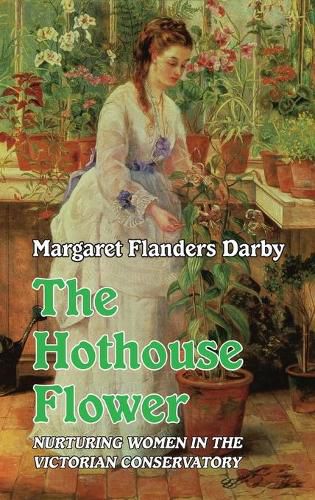Readings Newsletter
Become a Readings Member to make your shopping experience even easier.
Sign in or sign up for free!
You’re not far away from qualifying for FREE standard shipping within Australia
You’ve qualified for FREE standard shipping within Australia
The cart is loading…






This most unusual book traces the interrelations of architecture, horticulture, literature, social history and gender.
The Victorian conservatory and the lady enclosed within it proved to be ambivalent, enigmatic and self-contradictory. What began optimistically as protection ended as imprisonment. The metaphor offers a vision of fractured femininity, juxtaposing the vegetable against the human in a dialogue of disjunction and paradox.
The work is illustrated throughout with images from garden history texts, photographs, paintings and architectural drawings. It especially examines the critical ambivalence of the conservatory space and its paradoxes.
By the middle of the Anglo-American nineteenth century, greenhouse design and gardening had developed to the point where writers and painters saw the heated glass conservatory as a space that captured symbolically the paradoxes of nurture and display thought natural to the Victorian lady.
In a series of narrative encounters, some fictional, others historical, this book explores the implications of the introduction of Glass Consciousness which was most famously dramatized by Joseph Paxton’s innovative Crystal Palace in 1851.
The author examines key figures and their works. These include Paxton, whose triumphs included being the first in England to bring an Amazonian water lily into flower. Dr. Darby also closely examines Nathaniel Ward’s experiments and the work of Shirley Hibberd, John Stuart Mill and Donald Winnicott - all influential men who theorized nurture.
$9.00 standard shipping within Australia
FREE standard shipping within Australia for orders over $100.00
Express & International shipping calculated at checkout
This most unusual book traces the interrelations of architecture, horticulture, literature, social history and gender.
The Victorian conservatory and the lady enclosed within it proved to be ambivalent, enigmatic and self-contradictory. What began optimistically as protection ended as imprisonment. The metaphor offers a vision of fractured femininity, juxtaposing the vegetable against the human in a dialogue of disjunction and paradox.
The work is illustrated throughout with images from garden history texts, photographs, paintings and architectural drawings. It especially examines the critical ambivalence of the conservatory space and its paradoxes.
By the middle of the Anglo-American nineteenth century, greenhouse design and gardening had developed to the point where writers and painters saw the heated glass conservatory as a space that captured symbolically the paradoxes of nurture and display thought natural to the Victorian lady.
In a series of narrative encounters, some fictional, others historical, this book explores the implications of the introduction of Glass Consciousness which was most famously dramatized by Joseph Paxton’s innovative Crystal Palace in 1851.
The author examines key figures and their works. These include Paxton, whose triumphs included being the first in England to bring an Amazonian water lily into flower. Dr. Darby also closely examines Nathaniel Ward’s experiments and the work of Shirley Hibberd, John Stuart Mill and Donald Winnicott - all influential men who theorized nurture.